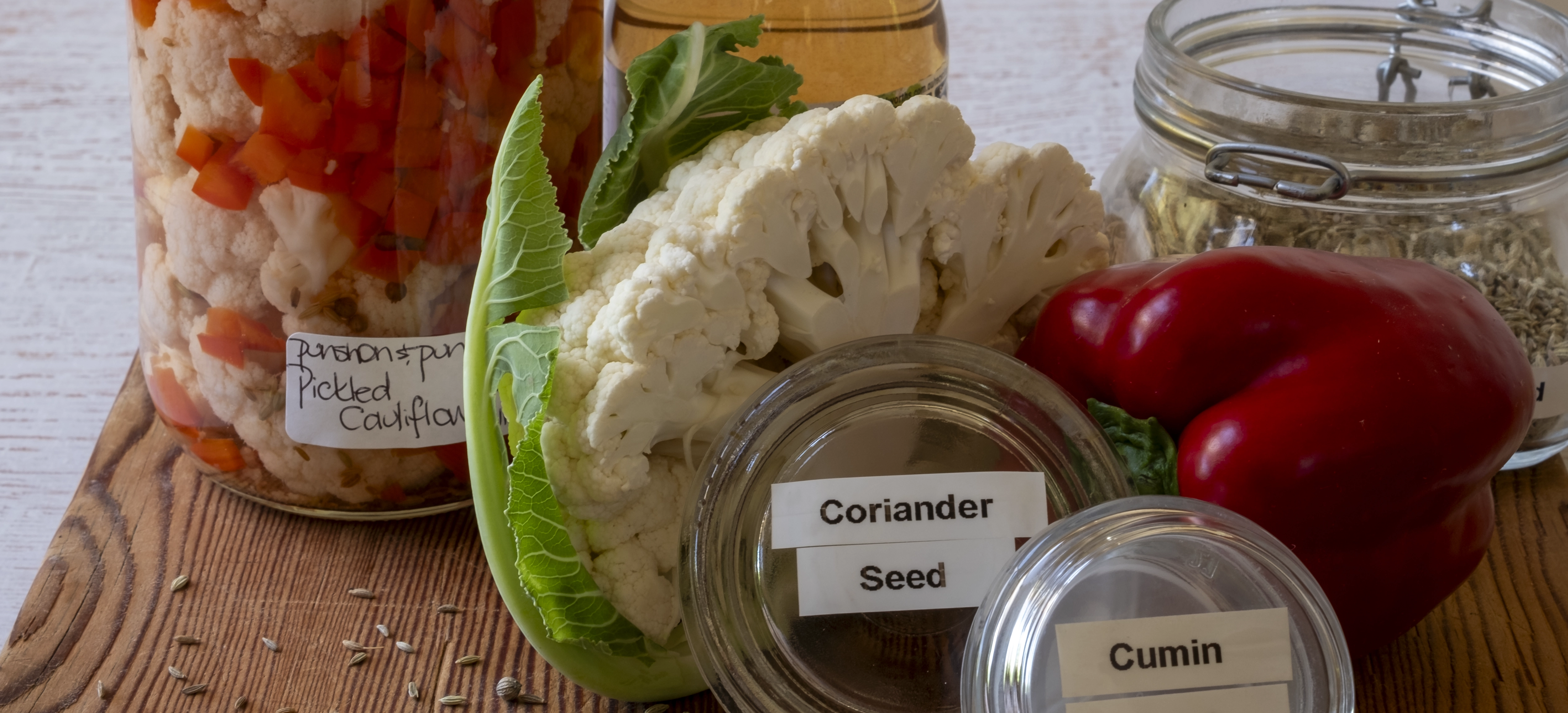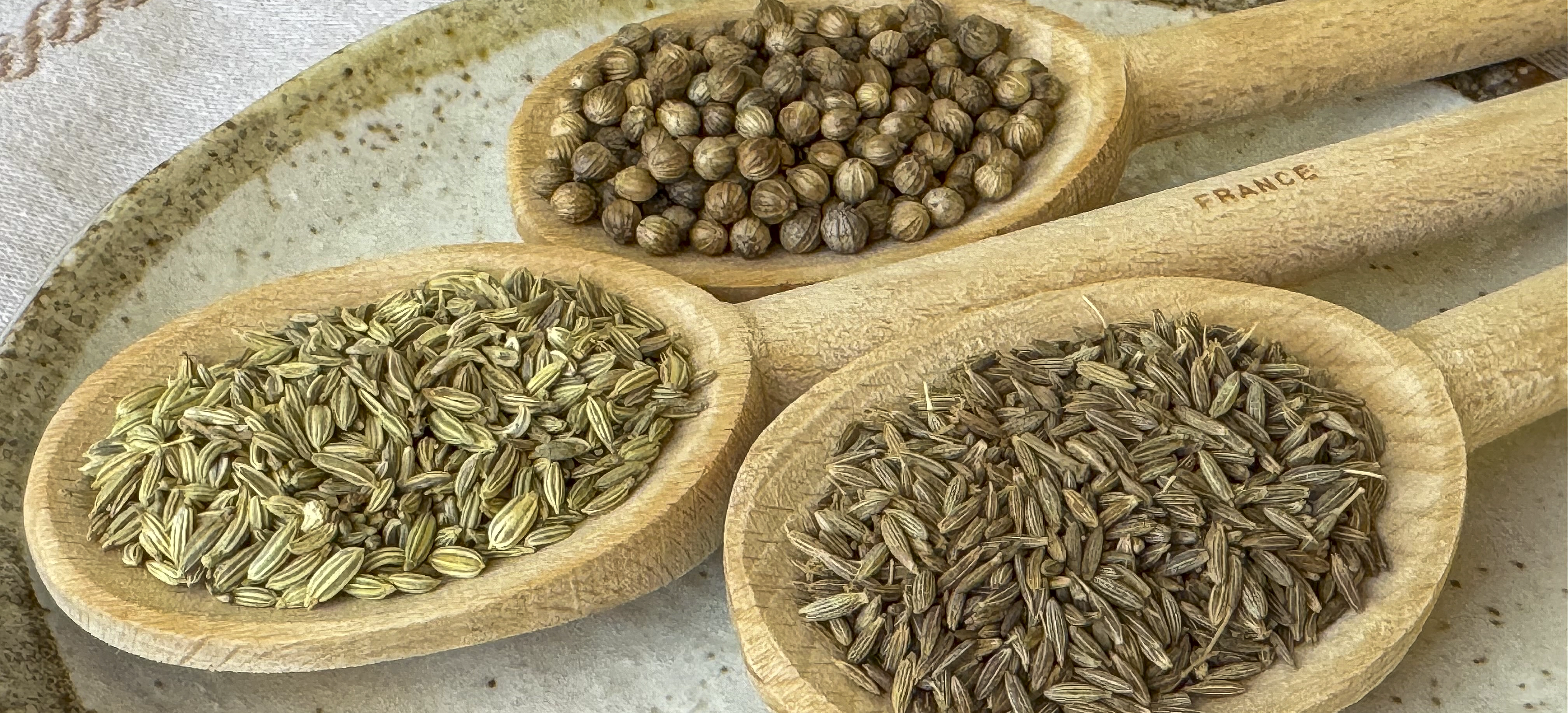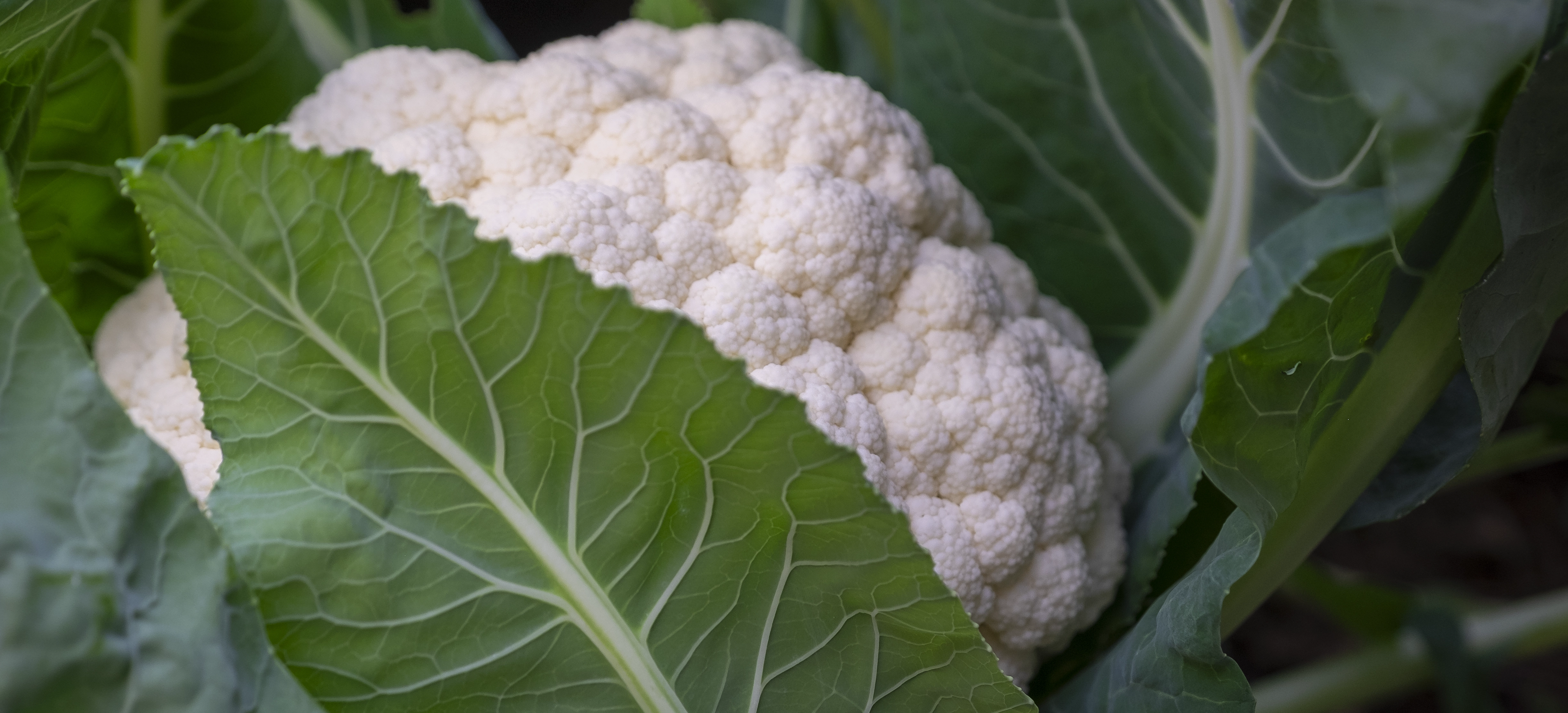Pickled Cauliflower
- Pickles, Chutney, Relish & Sauces

Pickled cauliflower is a great addition to antipasti platters, a Ploughman’s Lunch, BBQs, and cheese boards. Lightly spiced, the cauliflower remains crisp and looks colourful when presented with some of the pickled red capsicum. So quick and easy to make, pickling with a spiced vinegar, is a great introduction to preserving. Allow to mature for a minimum of 4 weeks, preferably for 6-8 weeks to allow the flavours to mellow and develop. Make a colourful batch today in preparation for the holiday season.
- Preparation Time:
- 30 minutes
- Cooking Time:
- 20 minutes
- Quantity:
- 4 x 900ml jars
PREPARATION
Sterilise sealable good quality glass jars with non-corrosive sealable lids.

INGREDIENTS
- 1
- Cauliflower, large
- 2
- Red capsicum, medium
- 1 teaspoon
- Cumin seeds, whole
- 2 teaspoons
- Coriander seeds
- 2 teaspoons
- Fennel seeds, whole
- 500 ml
- Water
- 500 ml
- Vinegar, white
- 2 teaspoons
- Sugar, white
METHOD
Wash and drain the cauliflower head on clean dry tea towel or absorbent kitchen paper. Remove any damaged pieces. Break into florets by removing the core form the base of the cauliflower. Then cut into the head and either cut out or break of the florets. Try to avoid cutting through them as the final pickle will look more attractive with whole pieces of florets of different sizes.
To prepare the red capsicum, cut in half, remove the seeds, and white membrane and cut into medium sized dice.
In a stainless-steel pan, add the vinegar, water, salt, and sugar. Bring to boil to dissolve the salt and sugar. Take off the heat.
Place ¼ teaspoon cumin, ½ teaspoon of coriander and fennel seeds into cold sterilised 900 ml jars. Fill the bottom third of the jar with cauliflower, then cover with a layer of red capsicum, continue to layer until the jar is full finishing with a layer of cauliflower, leaving a 2- 2.5 cm gap at the top of the jar. Pack the vegetables down tightly between each layer.
Pour the hot liquid over the vegetables and ensure the top of the cauliflower is covered.
Seal and process the jars for 10 minutes in a boiling water bath. Refer the Notes Section: Food Preserving Unit and Stock Pot Method below for detailed instruction.
Once the water bath has been completed, remove form the preserving unit/large saucepan and allow to cool.
Dry the jars, label, and store in a cool dark place in the kitchen or pantry. Allow to mature for at least 4 weeks before eating.
After opening, store in the fridge.
NOTES
- Choose a cauliflower with cream white florets that are not discoloured, and the remaining leaves are fresh and green, not wilted, and yellow. Dry after rinsing so any additional water does not dilute the vinegar mixture.
- Good quality jars should be used in all preserving, particularly when they are processed in a hot water bath. Thin jars often cannot withstand the temperatures and may crack either in the bath or on and or after removal. Avoid the disappointment and invest in some good jars from a homewares or preserves outlet. Select jars that have non-reactive lids as the vinegar solution can cause the lids to rust over time.
- Cumin (Cuminum cyminum)
- Seeds are harvested from annual plants and the seeds are collected from small, white, or pink-mauve flowers. The plants are cut, then dried and threshed to separate the fruit, which is then dried further. It has an earthy, herby, and woody flavour that is distinctive, highly aromatic and it has a pungent flavour. The seeds are approximately 6mm long (1/4 inch) and will keep their flavour if stored in a sealed container in a cool, dark place. Cumin powder is also available however it loses its flavour and aroma quickly and should be used within a couple of months. Thought to be native to the Nile Valley and Eastern Mediterranean, its cultivated in India, China, Syria, Türkiye, and Iran.
- Coriander (Coriandrum sativum)
- A versatile spice, that has a bittersweet citrusy flavour with warm, floral undertones. Grown as an annual, the stalks are cut before the fruits are fully ripe. They are threshed, cleaned, and dried. The stalks and roots are also edible and used frequently in Thai cooking. Powder is also available but loses its aroma quickly. It can act as a thickener. Native to the Mediterranean and Southern Europe, its cultivated throughout worldwide for its seeds and leaves.
- Fennel (Foeniculum vulgare)
- A hardy and herbaceous plant, its seeds are collected from the flowers which are threshed, cleaned, and dried. The seeds vary in colour from sage green to yellow brown. It has a mild aniseed flavour and is used in sweet and savory foods. Native to the Mediterranean, its cultivated throughout Europe, Türkiye, Japan, Argentina, North America, and California.
- Food Preserving Unit Method
- Place sealed bottles/jars in Fowlers Preserving Unit or equivalent.
- Cover with water, bring to the boil and hold at gentle boil for 10 minutes.
- Turn off, remove lid, and allow to stand for 5 minutes before removing.
- Using the tap on the preserving unit draw off some of the hot water. Reduce to a level that is sufficiently below the bottles to be able to safely remove them without scalding yourself.
- Remove from hot water bath and place on a board and rest overnight. A vacuum will form inside each jar and as it cools, it will draw down the lid and create a secure seal.
- Stock Pot Method
- Line a large stock pot with some sheets of newspaper or a cut-down cake rack. Place the bottles on the newspaper or rack, in the pot, allowing space between each bottle so they do not touch. This lining will protect the bottles from direct heat and help prevent cracking.
- Cover the preserves with water which is the same temperature as the preserves. Bring to the boil and hold at gentle boil for 10 minutes
- Turn off, remove lid, and allow to stand for 5 minutes before removing.
- If possible, remove some of the hot water so the level is sufficiently below the bottles to be able to safely remove them without scalding yourself.
- Remove from hot water bath and place on a board and rest overnight. A vacuum will form inside each jar and as it cools, it will draw down the lid and create a secure seal.

